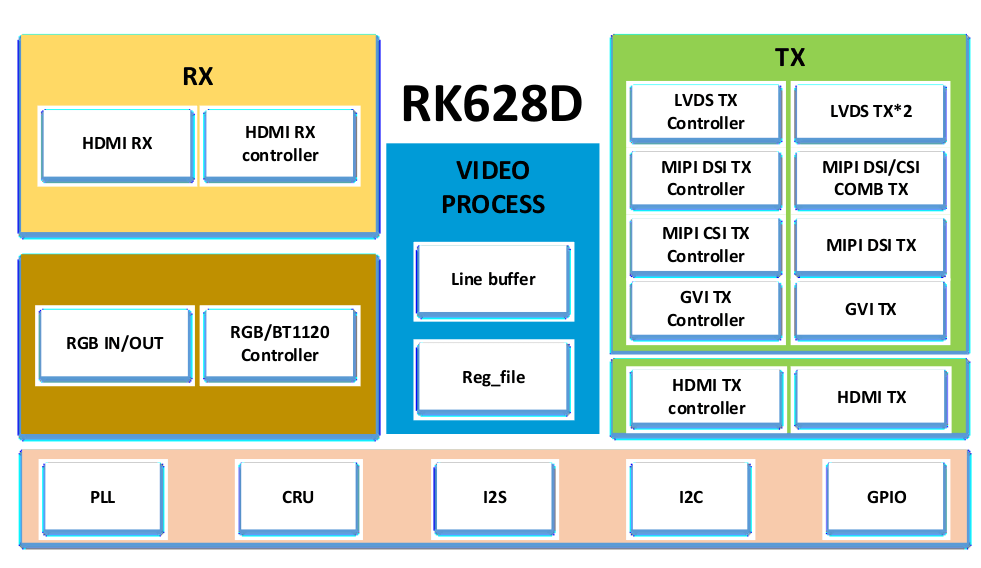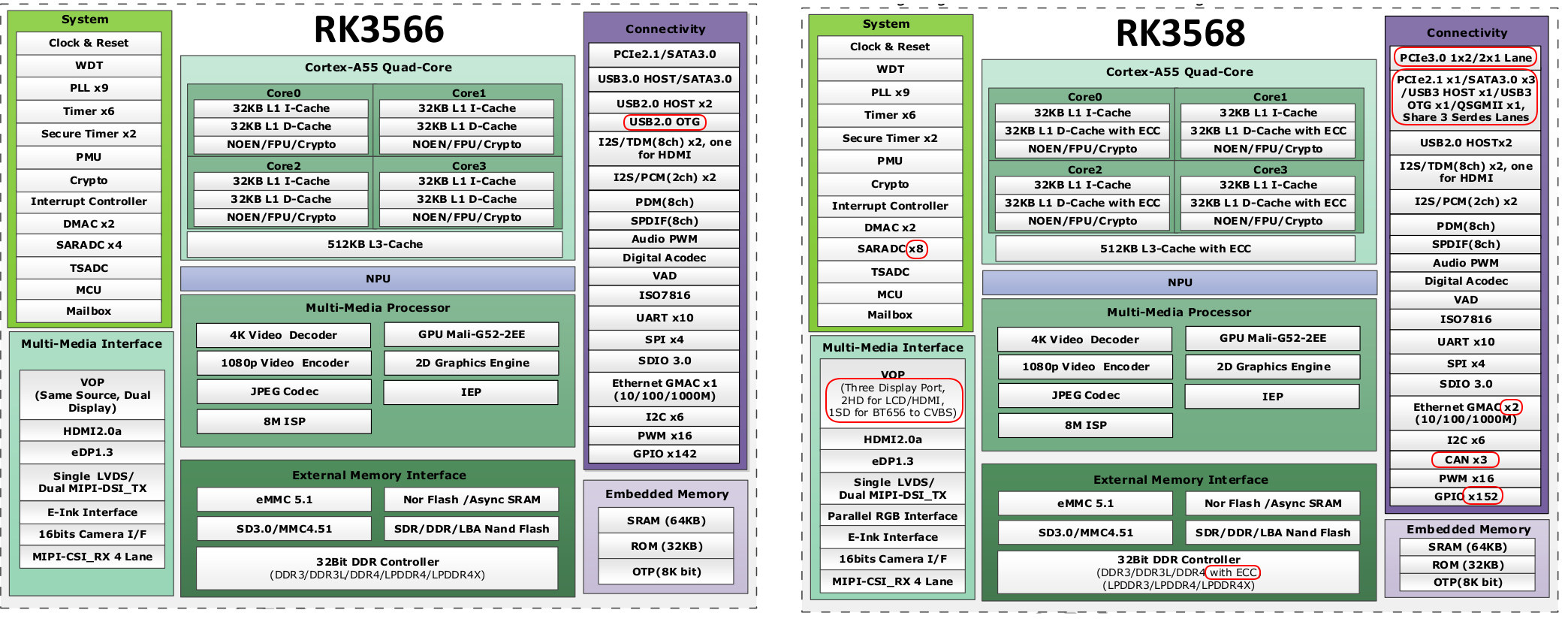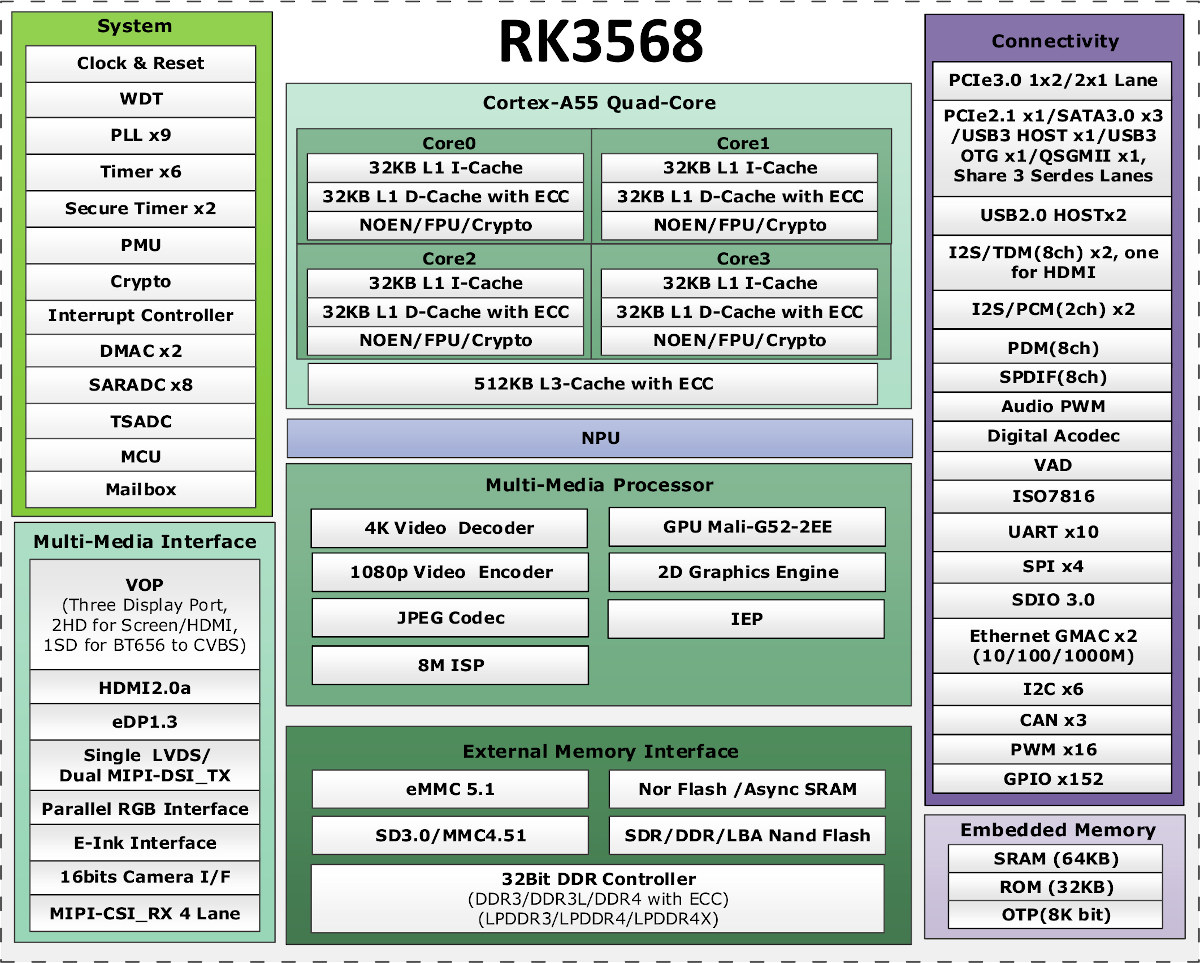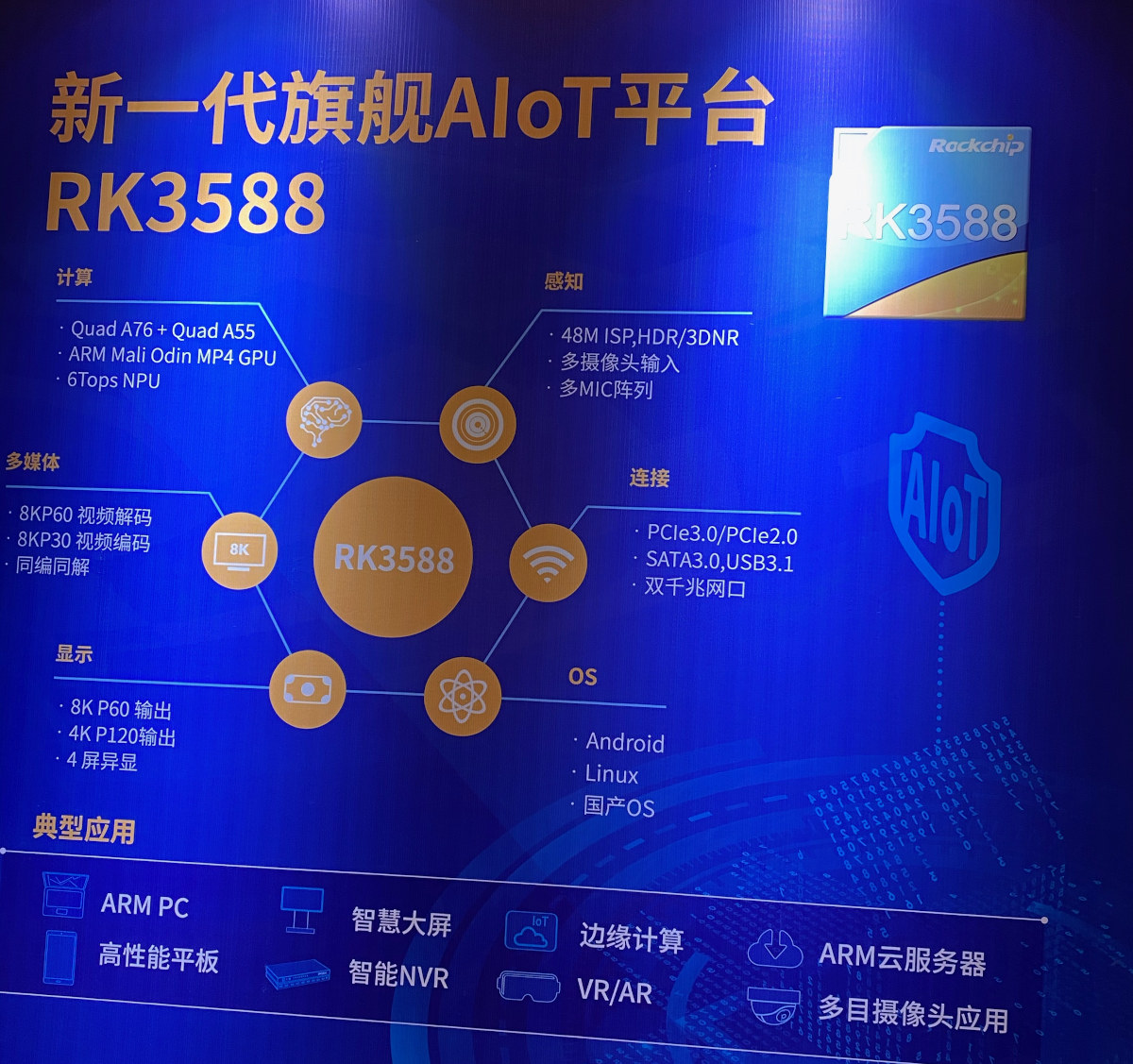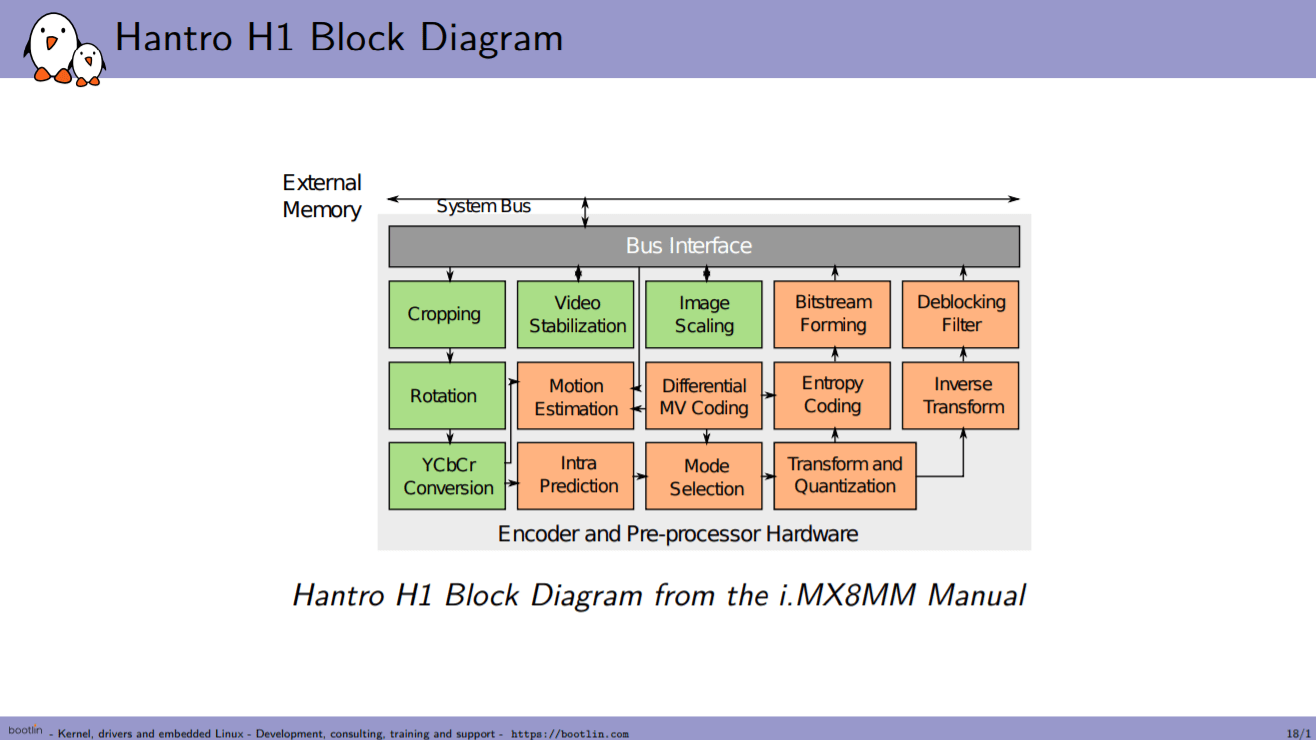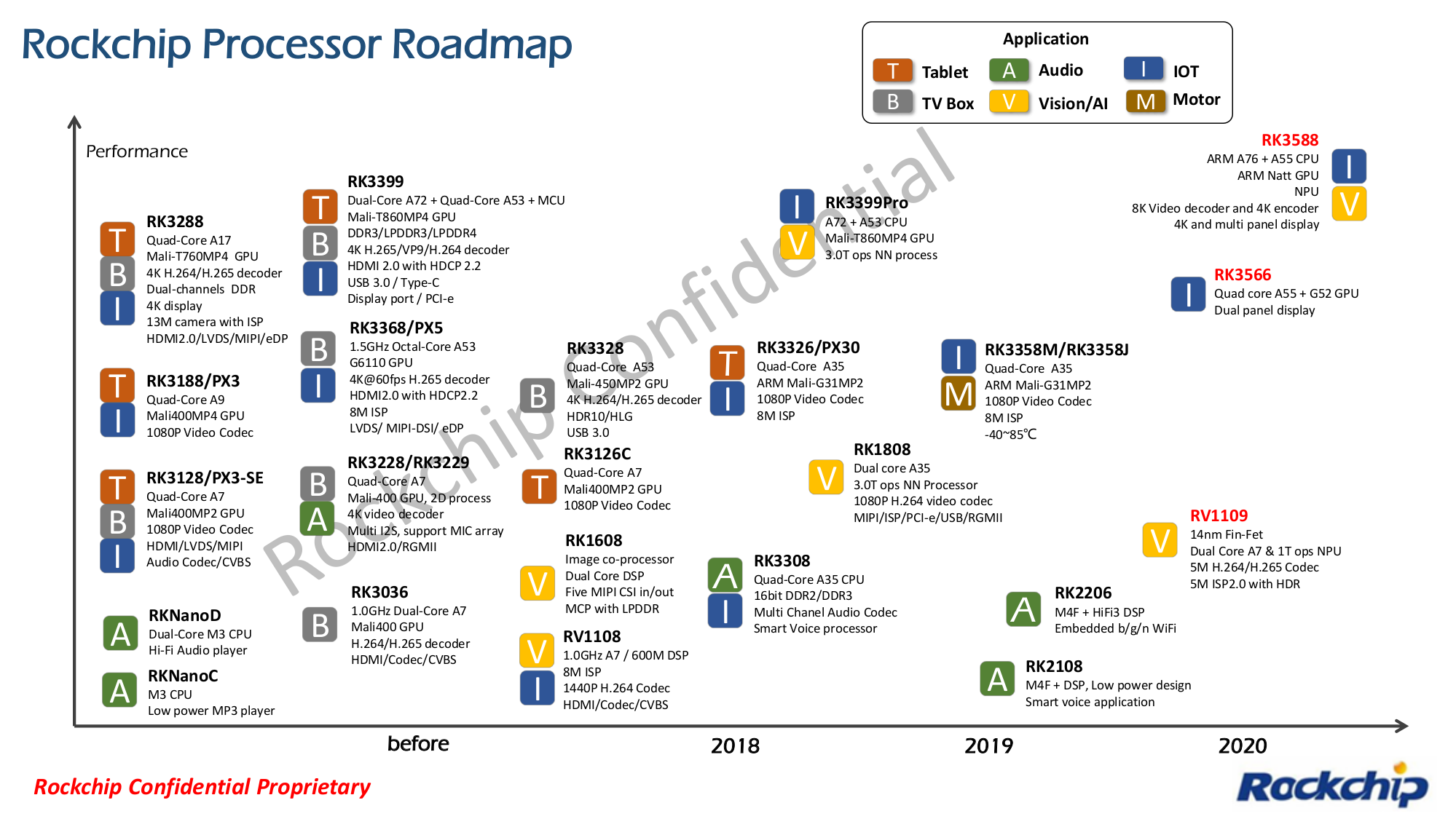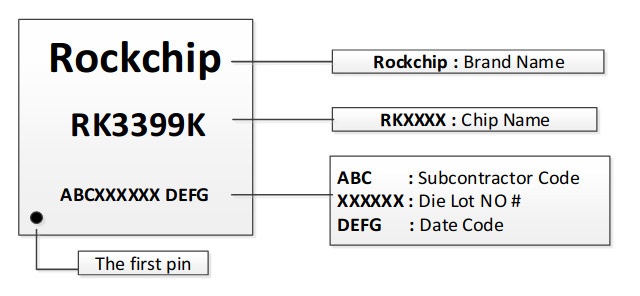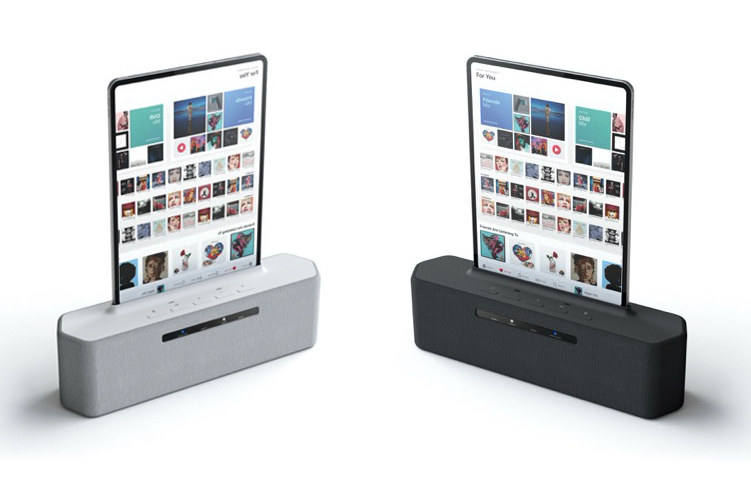If I’m asked about a Linux or Android platform with HDMI input, I would immediately think about Realtek RTD1295 SoC with products like Zidoo X9S or X2 TV stick which enabled picture-in-picture (PiP), UDP/TCP broadcast of HDMI input, or PVR functions. Some Rockchip boards such as Orange Pi RK3399 SBC do come with both HDMI output and HDMI input, with the latter relying on a Toshiba TC358749XBG HDMI interface bridge IC. But Rockchip has decided to design its own HDMI input chip with Rockchip RK628D supporting HDMI, parallel RGB or BT.1120 as input and dual MIPI, dual LVDS, GVI (general video interface), parallel RGB, or BT.1120 as outputs. The new chip would enable PCB designers to add display output ports to application processors such as RK3288 or RK3399, or add an HDMI input interface. Rockchip RK628D key features and specifications: Video input interfaces HDMI 1.4/2.0 RX interface up to 4Kp60 […]
Rockchip RK3566 and RK3568 datasheets and features comparison
We first covered Rockchip RK3566 processor in February, but we’ve been informed the specifications have changed since then, and earlier this month, we also wrote about RK3568 quad-core Cortex-A55 processor with the same base features but some extra I/Os. But due to NDAs, people familiar with the chips could not release too many details, so we did not get the full picture. This has just changed as the datasheets for both processors have just dropped from somewhere here and there, and we can get a much closer look. RK3566 and RK3568 specifications I’ve highlighted the obvious differences above, with the big ones being the PCIe interface and RK3568 having dual Gigabit Ethernet. The other features comparison can be found in the table below. Multiplexed interfaces. Important note. Rockchip RK3566 and RK3568 are using Multi-PHY Interfaces, and while the table above lists all possible interfaces, they can not all be used […]
Rockchip RK3568 processor to power edge computing and NVR applications
We recently reported on the Rockchip developer conference (RKDC) 2020, and especially the upcoming Rockchip RK3588 Cortex-A76/A55 processor that packs a lot of power and features, and is now scheduled to launch in Q3 2021. But as you can imagine there were other products revealed during the conference, including the new Rockchip RK3568, similar to the previously announced RK3566, and designed for edge computing and network video recorder (NVR) applications. There’s also an RK353X processor specifically designed for NVR application that should have similar performance as RK3568, but a lower cost, as well as two UP camera SoC with RV1106 and RV1128. CNX Software managed to obtain the presentation for the RK3568 processor from the conference so we’ll focus on the quad-core Cortex-A55 processor in this post. Rockchip RK3568 specifications: CPU – Quad-core Cortex-A55 processor with NEON and FPU GPU – Mali-G52 EE with support for OpenGL ES 1.1 to […]
Rockchip RK3588 specifications revealed – 8K video, 6 TOPS NPU, PCIe 3.0, up to 32GB RAM
Rockchip RK3588 is one of the most anticipated processors for the year on this side of the Internet with the octa-core processor features four Cortex-A76 cores, four Cortex-A55 cores, an NPU, and 8K video decoding support. [Update December 2021: check out our post with the RK3588 datasheet for the latest details about the processor] The roadmap shows an expected launch date in Q3/Q4 2020, but sadly the release date will be pushed back in the future. Having said that, the Rockchip Developer Conference (RKDC) is now taking place, and the company has put up a poster that reveals a bit more about the processor. That means we now have more detailed Rockchip RK3588 specifications: CPU – 4x Cortex-A76 and 4x Cortex-A55 cores in dynamIQ configuration GPU – Arm Mali “Odin” MP4 GPU AI Accelerator – 6 TOPS NPU 3.0 (Neural Processing Unit) VPU – 8Kp60 video decoding support, 8Kp30 encoding […]
Hantro H1 hardware accelerated video encoding support in mainline Linux
With the increasing need for video encoding, there are some breakthrough developments in hardware-accelerated video encoding for Linux. Bootlin has been working on the implementation of Hantro H1 hardware accelerated video encoding to support H.264 encoding on Linux which follows the company’s work on the previously-released open-source VPU driver for Allwinner processors. Hantro H1 Hardware Hantro H1 is a common hardware H.264 encoder, it can also do VP8 and JPEG. It is found in a few ARM SoCs including a lot of Rockchip (RK3288, RK3328, RK3399, PX30, RK1808) and NXP (i.MX 8M Mini). Depending on the version, it can support up to 1080p at 30 or 60 fps. Here we can see different blocks used for encoding. Hantro H1 is a stateless hardware implementation which means it has no microcontroller or firmware running. As can be seen in the diagram, it has a pre-processor that can do things like cropping, […]
Rockchip RK3566, RK3588, RV1109 SoC’s Coming in 2020 based on Rockchip Processor Roadmap
Last year, Rockchip had a presentation in China where they highlighted their processor roadmap for 2020, and we learned about processors such as Rockhip RK3588 Cortex-A76/A55, RK3530 Cortex-A55 SoC’s, and RV1109 camera processor, but we had limited details about the processors at the time. CNX Software has now received a more detailed roadmap that reveals some of the specifications about the new processors, and some Rockchip products that people may not be aware of such as a 3D structured light module and a 4G module. Rockchip RK3566 Rockchip RK3530 is not shown in the roadmap, but there’s a similar RK3566 processor, so I assume the company just changed the name. Rockchip RK3566 specifications: CPU – Quad-core Arm Cortex-A55 @ 1.8GHz GPU – Arm Mali-G52 2EE NPU – 0.5 TOPS with support for INT8/ INT16 Multi-Media 8M ISP 2.0 with 3F HDR(Line-based/Frame-based/DCG) Support MIPI-CSI2,4-lane 1080p60 H.265, H.264 encoding 4K H.264/H.265/VP9 60fps […]
Rockchip RK3399K Processor Clocks Up to 2.0 GHz, Supports Wider Temperature Range
First unveiled in 2016, Rockchip RK3399 hexa-core processor is still widely used in development boards, Android mini PCs and Chromebooks. But today, I’ve come across another variant. Rockchip RK3399K has exactly the same features but either supports higher clock CPU clocks (Cortex-A72 @ 2.0 GHz, Cortex-A53 @ 1.6 GHz), or wider temperature range between -20°C and 85°C with lower clock speeds for the CPU (A72: 1.8 GHz, A53: 1.4 GHz) and the GPU (600 MHz) I think I’ve read stories about Rockchip RK3399 being clocked at 2.0 GHz with proper cooling, but it may not be reliable on all boards. RK3399K should fix that. Rockchip actually updated its datasheet on the 29th of May, but I only found out about it today. Everything else looks the same, and you’ll be able to find out whether your device uses RK3399 or RK3399K by looking at the marking on the chip. That’s […]
Rockchip RK2108 Smart Audio Dock Converts Tablets into Smart Displays
Last April, Rockchip published a roadmap to 2020 with processors such as RK3588 Cortex-A76/A55 or RK3530 quad-core Cortex-A55 SoCs. Part of the roadmap was also Rockhip RK2108 Arm Cortex-M4 microcontroller with an Audio DSP which did not get as much coverage. The company has now announced RK2108 based smart docks that convert tablets into smart display / speakers so that they can be waken-up and controlled by voice commands. Rockchip RK2108 audio MCU supports A/D audio interface, MIPI DSI/MCU LCD interface and USB2.0 interface, and comes with the following key features: Built-in audio DSP for voice/audio signal processing Audio pre-processing, active noise reduction, AEC, etc… for improved voice recognition Customizable wake-up words and offline instructions Ultra-low power consumption in both standby and operating modes The RK2108 smart dock pictured above connects to compatible Android tablets over USB or Bluetooth, and turns those into smart display products that can handle voice […]


